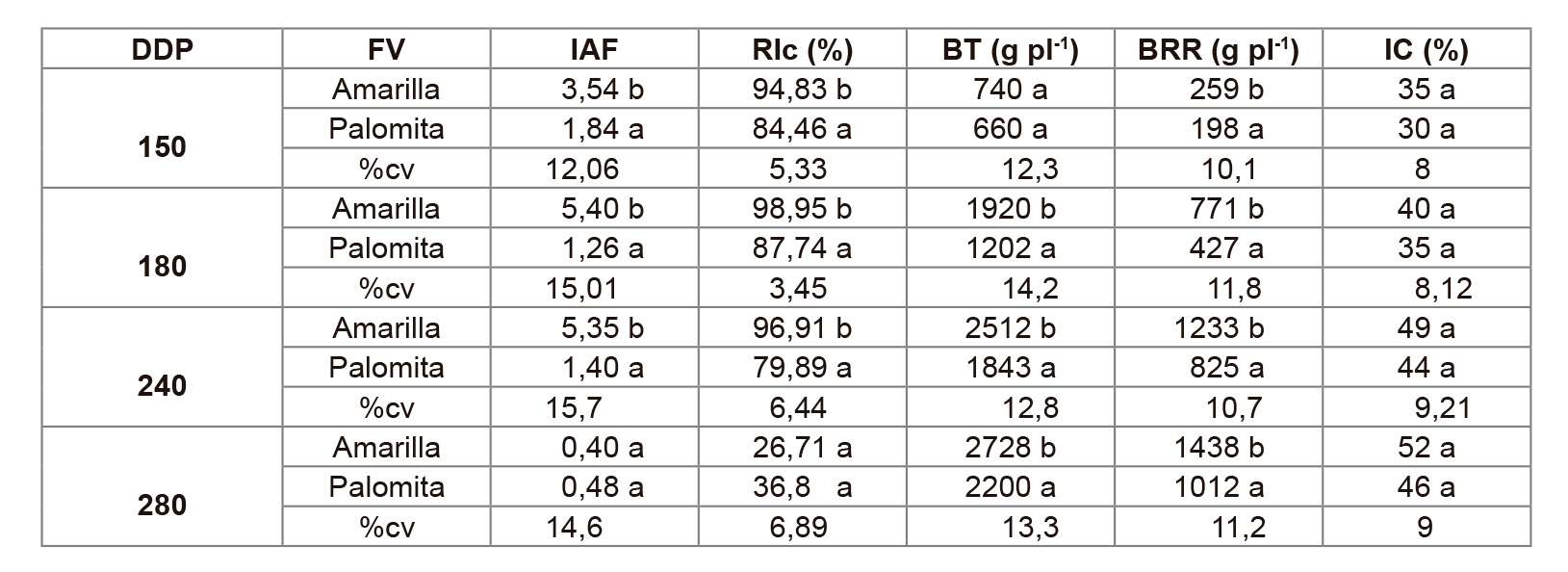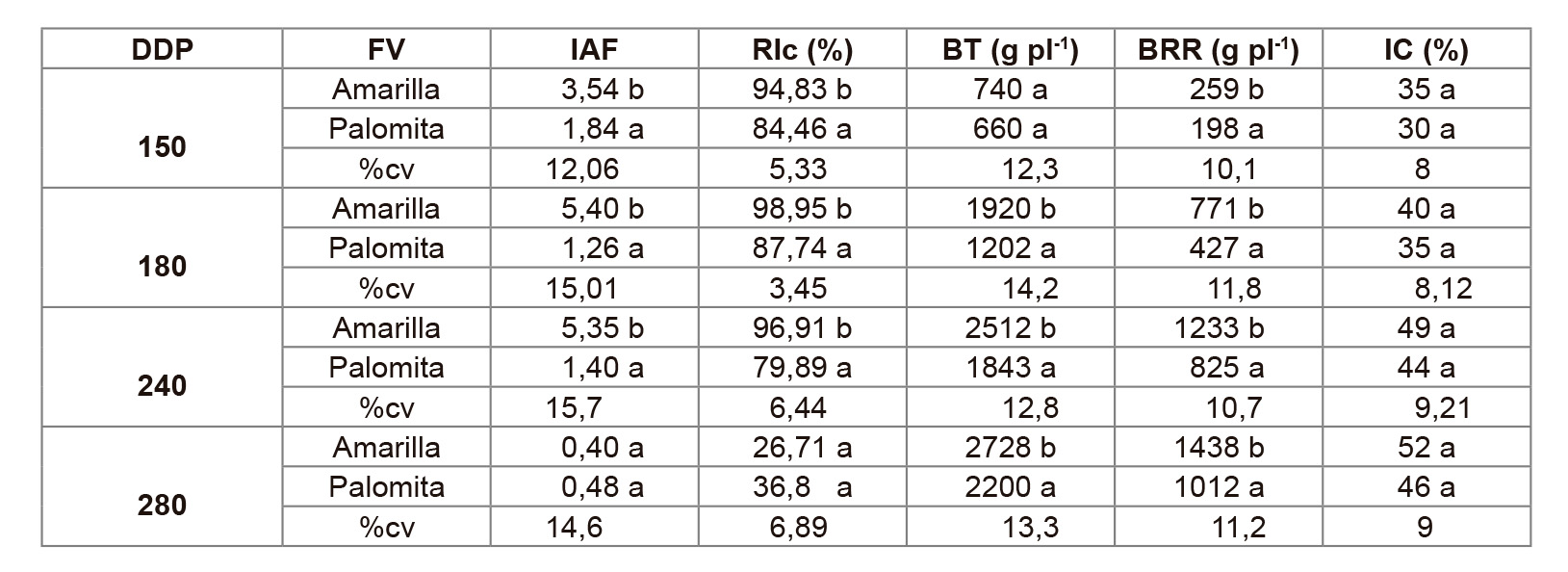Fenología de los estados vegetativos de mandioca (Manihot esculenta Crantz) en base al tiempo térmico
Palabras clave:
Manihot esculenta, raíz amilácea, estados fenológicos, grados días-días calendarioResumen

La mandioca (Manihot esculenta Crantz) constituye la cuarta fuente mundial de calorías en la alimentación humana, es apta para la nutrición animal y para extracción de biocombustible. Este artículo tiene como objetivo evaluar el comportamiento de un modelo de tiempo térmico (TT) para caracterizar las fases fenológicas (FF) de dos cultivares de mandioca en un ciclo de crecimiento de 280 días, cultivados bajo condiciones de campo en Corrientes, Argentina. Las observaciones se realizaron durante las campañas 2007/2008 y 2008/2009. El cálculo del TT se basó en el método residual, la temperatura base fue 16°C. Entre ambos cultivares se observaron diferencias en los grados-día (GD) acumulados para cumplir las FF de expansión de la primera (00-01) y novena hoja (00-02 H9), y en la de engrosamiento de raíces (00-04 ERR), esta última relacionada con el índice de área foliar (IAF). Para completar el ciclo de crecimiento los cultivares Palomita y Amarilla requirieron entre 2027 y 2096 GD, respectivamente. El patrón de crecimiento y desarrollo fenológico de los cultivares de mandioca basado en los GD acumulados, puede utilizarse para caracterizar el progreso del cultivo en el bioambiente de Corrientes.
Descargas

Descargas
Publicado
Cómo citar
Número
Sección
Licencia

Esta obra está bajo una licencia internacional Creative Commons Reconocimiento-NoComercial-CompartirIgual 3.0.
Aquellos autores/as que tengan publicaciones con esta revista, aceptan las Políticas Editoriales.










.jpg)




